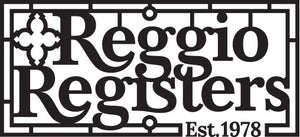Built to Last: Why Builders Choose Metal Registers for Modern Flooring Installs
In today’s high-end custom home market, every detail counts, especially when it’s embedded in the floor. From engineered hardwood to tile, builders are constantly balancing aesthetics with long-term performance. That includes choosing registers that won’t crack, warp, or loosen over time.
For Tyler Farrell of Killowen Construction, durability is just as important as design, and it’s why he consistently installs metal registers over wood.
The Challenge Beneath the Surface
When building with engineered flooring or modern composite materials, many trade pros know that wood movement is a factor, even without visible signs. Add in changing seasonal temperatures, high traffic, and design expectations, and you get a demanding environment for flush-mount registers.
“You have to make sure you have a really good guy that makes [flush wood vents] super clean and dialed,” Tyler says. “That’s not always a guarantee on every job”.
One common complication? Radiant floor heating.
Heat Matters Even If It’s Not Coming from the Vent
While radiant floor systems don’t use registers to deliver heat, they do influence the surrounding materials, including engineered wood and anything installed flush within it.
“Real hardwood floors are very temperamental here,” Tyler explains. “We do a lot of underfloor heat, and that makes [wood] move like crazy”.
That movement can pop flush-mount wood registers out of place or cause warping over time, especially in homes with radiant heating under engineered wood.
“I prefer a metal register like yours as opposed to one that is built and dropped in out of engineered flooring,” Tyler says. “My kids destroyed ours [basic registers], just turned them into bunker Jenga pieces”.

A Durable Detail That Makes a Design Impact
Builders like Tyler aren’t looking for off-the-shelf registers. They want products that match the quality of their builds, from the inside out.
“Our homes aren’t starter homes,” Tyler adds. “We’re not looking for product at big box stores… We want registers that match the quality of everything else we build”.
That’s where Reggio Registers’ metal registers stand out:
- Heat-resistant, even in radiant floor scenarios
- More stable than wood in engineered flooring
- Available in historic and modern designs
- Built from powder-coated steel, cast iron, or aluminum
Built for Builders. Loved by Homeowners.
Metal registers aren’t just about strength. They’re about setting up every finish detail for long-term success.
Choosing Between Wood and Metal? Here's a Quick Guide
| Metal Registers | Wood Registers | |
| Heat Resistance | Excellent, ideal for radiant or sun-exposed floors | Moderate, may expand or contract |
| Durability | Strong underfoot, long lifespan | Can dent, chip, or warp |
| Visual Impact | Historic or modern finishes | Warm, traditional appeal |
| Best Use Case | Radiant or engineered flooring, high-traffic areas | Non-heated hardwood, light-use areas |

Specify Registers That Last
Whether you're managing flooring expansion, radiant heat compatibility, or long-term quality, Reggio Registers’ metal registers are built to perform and designed to impress.


